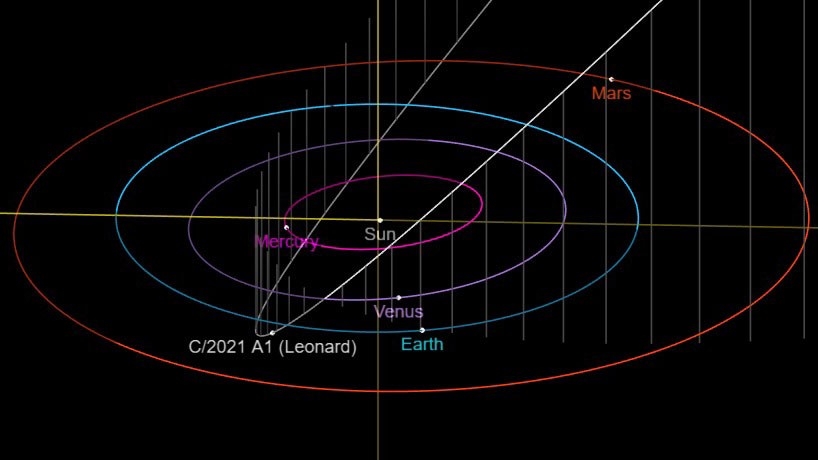Last July, C/2020 F3, nicknamed comet NEOWISE, was visible to the naked eye in the French sky. To locate it, it was enough to observe the claws of the Big Dipper. Will we be able to enjoy such a show again this year?
The object that interests us today is Comet Leonard, cataloged C/2021 A1, discovered last January by astronomer Gregory J. Leonard from the Observatory of Mount Lemmon, in the Santa Catalina Mountains, Arizona.
At the time, it was an extremely faint object of magnitude 19. Recall that the higher the magnitude, the lower the luminosity. To better understand, tell yourself that the object was then nearly 160,000 times darker than the faintest stars visible to the naked eye.
The comet was then positioned about five astronomical units from the sun , or five times the Earth-Sun distance (149.565 million kilometers), near the orbit of Jupiter. It is approximately at this distance that methanol (CH3OH) and water begin to undergo the process of sublimation caused by the heat of the Sun. The matter, then solid, turns into gas, hence the presence of a weak tail released by the comet at the time of its first observation.
Preliminary calculations suggest Comet Leonard is in an extremely long and flattened elliptical orbit, taking it more than 3,500 AU away from the sun (523 billion km). On the other hand, we know that it will get closer at the end of the year. On December 12, the comet will pass within 34.9 million km from Earth and less than 92 million km sun on January 3, 2022.
For now, we can't say whether or not this comet will be visible to the naked eye, as these objects are so unpredictable, but we could expect a magnitude 4 . If so, Leonard should be easily visible through binoculars or a small telescope...even with the naked eye with a bit of luck. Once the Sun has passed, the comet will move away and quickly disappear, bathed in its light.

One of the reasons for optimism is that the object is in a closed orbit and has probably visited the vicinity of the Sun at least once before, around 70,000 years ago.
This is good news in that a comet that has never "rubbed" against the Sun can develop a surface covered with highly volatile materials (carbon dioxide, nitrogen and carbon monoxide). However, these ices tend to vaporize very far from the sun, so the objects concerned can display misleading "bursts" of brightness before rapidly darkening.